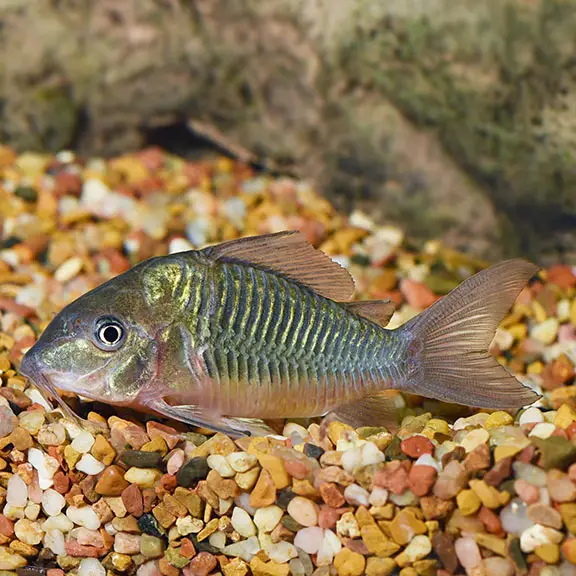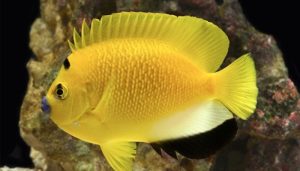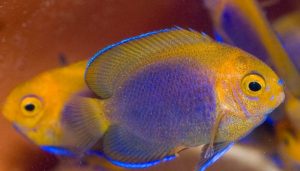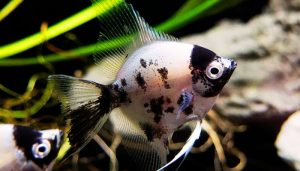The Green Cory Catfish, scientifically known as Corydoras aeneus, is a popular species among aquarium enthusiasts due to its peaceful nature and vibrant green stripe colors. This small freshwater fish is native to the rivers of South America, particularly in countries like the United States, Colombia, Uruguay, and Argentina.
In this guide, we will explore various aspects of caring for the emerald green Cory catfish, including its Corydoras splendens species profile, diet, habitat, and breeding. Understanding these elements will help you maintain a thriving environment for your corys.
If you’re looking to add a splash of charm and vibrancy to your aquarium, the emerald Cory catfish might just be the perfect choice!
Known for their peaceful temperament, shimmering green hues, and delightful bottom-dwelling behavior, these small yet captivating freshwater fish are a favorite among aquarists of all levels.

Ready to explore how the green aeneus Cory fish can transform your aquarium into a serene underwater haven? Keep reading to uncover tips, tricks, and essential insights that will help you nurture these little gems like a pro.
Table of Contents
ToggleGreen Cory Catfish Species Profile
The Green Cory fish is a member of the Corydoras genus, which consists of small, bottom-dwelling catfish. Typically reaching a size of about 2.5 inches (6.4 cm) as adults, these fish are known for their distinctive greenish-brown coloration and the unique patterns on their bodies.
They possess barbels on their snouts, which they use to forage for food on the substrate of the aquarium. A group of Green Corys is ideal for community tanks, as they thrive when kept in schools of six or more.
Their friendly demeanor makes them an excellent choice for peaceful aquariums, where they can coexist with various other corydoras species.
In terms of care, the Corydoras green laser is relatively easy to maintain, making it suitable for both novice and experienced aquarists. They prefer a well-maintained tank with a soft substrate, where they can burrow and explore. The temperature should be kept between 72°F and 78°F (22°C to 26°C) to ensure optimal health.
Additionally, these fish are known for their social behavior; keeping them in groups mimics their natural habitat and reduces stress. With proper care, Green laser cory fish can live for several years, making them a delightful addition to your aquarium.
Green Corydoras Fish Colors and Markings
Green Corydoras exhibit a captivating range of colors and markings, enhancing their appeal as aquarium fish. Their bodies are predominantly a greenish-brown, providing them with a natural camouflage in their riverine environments.
The coloration can vary significantly depending on the individual and the conditions of the aquarium.
Some may display a more vibrant green, while others might have a subdued hue. The distinctive dark spots and patterns along their sides add to their charm, making them visually interesting inhabitants of any tank.
In addition to their base color, the Green Corydoras possess striking fins that contribute to their overall beauty. Their dorsal fin is typically more pronounced in males, while females are generally rounder and fuller-bodied, especially when they are carrying eggs.
The combination of their beautiful coloration and unique physical traits makes them a joy to observe. Providing plenty of plants and hiding spots in the aquarium can enhance their colors, as they feel more secure in a well-decorated environment.
Regular water changes and a balanced diet also play a significant role in maintaining their vibrant appearance.
Bronze Corydoras Diet and Feeding
The feeding habits of the Bronze Corydoras, which is closely related to the bronze green emerald Cory fish, are essential for maintaining their health and vibrancy. In the wild, these fish primarily feed on small invertebrates, plant matter, and detritus found on the riverbed.
In an aquarium setting, it is crucial to replicate this diet by providing a varied range of foods. High-quality sinking pellets, flakes, and live foods like brine shrimp or bloodworms are excellent options to include in their feeding regimen.
Feeding should occur in small quantities two to three times a day, ensuring that all fish in the tank receive enough food without excess waste. It is important to observe their feeding behavior, as Corydoras are known to be bottom feeders.
This means that they often rely on food that sinks to the substrate. Providing a balanced diet will not only keep them healthy but will also enhance their colors and overall vitality. Regularly diversifying their food sources will help meet their nutritional needs and contribute to their well-being.
Green Cory Catfish Habitat and Care
Creating an appropriate habitat for the emerald green Cory cat fish is crucial for their health and happiness. They thrive in well-planted aquariums with plenty of hiding spots, such as rocks and driftwood.
A soft substrate, like sand or fine gravel, is ideal for these fish, as it prevents damage to their delicate barbels while they forage. Maintaining good water quality is also essential; regular water changes and a proper filtration system will help keep the tank conditions optimal.
In terms of water conditions, the bronze cory catfish prefers a temperature range of 72°F to 78°F (22°C to 26°C), with a pH level between 6.0 and 7.5. They do best in slightly acidic to neutral water, which mimics their natural habitat.
Adding live plants can help to stabilize water parameters and provide additional hiding spaces. It is also advisable to avoid sharp objects in the tank, as they can injure the fish. By maintaining these conditions and providing proper care, you can ensure a thriving environment for your Green Corys.
Breeding the Bronze Corydoras
Breeding Bronze Corydoras is a rewarding experience for aquarists who wish to expand their fish collection. To stimulate breeding behavior, it is essential to maintain optimal water conditions and provide a suitable spawning environment.
A separate breeding tank with soft substrate, plants, and a gentle current can encourage the corys to spawn. The presence of both male and female corys is necessary for successful breeding; typically, a group of six fish will increase the chances of finding compatible pairs.
During the breeding process, males will display courtship behaviors, such as chasing and nudging females. The female will lay eggs on flat surfaces, and it is crucial to remove the eggs from the main tank to prevent them from being eaten by other fish. The eggs should be placed in a separate hatching tank with similar water conditions.
Once they hatch, fry will require infusoria or finely crushed flakes for nourishment until they are large enough to consume standard fish food. With patience and care, breeding laser corydoras fish can be a fulfilling endeavor.
Gender Differences
Distinguishing between male and female Green Cory Catfish is relatively straightforward once you know what to look for. Males are generally smaller and more slender than females, especially when viewed from above.
Their dorsal fins are also more pointed, which is a characteristic feature of males. In contrast, females tend to be rounder and fuller, particularly when they are ready to spawn, as they carry eggs in their bodies. Observing these differences can help aquarists manage breeding more effectively.
In addition to physical differences, behavior can also indicate gender. Males often exhibit more active and playful behavior, especially during courtship, while females may appear more reserved. When kept in a breeding group, the males will engage in elaborate displays to attract females.
Understanding these distinctions is essential for anyone interested in breeding Green Corys or simply wanting to ensure a balanced community aquarium. By recognizing these gender differences, you can create a more harmonious environment for your aquatic friends.
Commonly Asked Questions about Bronze Corydoras: Fish Species (FAQs)
How big do green Cory catfish get?
Green Cory catfish size: Full grown green Cory catfish typically reach a maximum size of 2.5 to 3 inches (6.5 to 7.5 cm) in length.
What do green Cory catfish eat?
Green Corydoras catfish are omnivores. 1 They primarily eat sinking tablets, frozen or live foods like bloodworms, daphnia, and blanched vegetables like zucchini.
Can green Cory catfish live with bettas?
Generally, no. Bettas are territorial and may attack Corydoras catfish, especially during spawning or if feeling stressed.
Do green Cory catfish eat algae?
No, green Corydoras catfish are not known for eating algae. They primarily feed on sinking tablets and frozen or live foods.
How long do green Cory catfish live?
Corydoras green laser fish have a lifespan of 5-10 years, sometimes even longer with proper care. Good water quality, a balanced diet, and a stress-free environment contribute to a longer life.
What is the ideal tank size for Green Cory Catfish?
The ideal tank size for emerald green Cory catfish is at least 20 gallons, allowing them ample space to swim and explore. They thrive in larger tanks, especially when kept in groups, as they are social fish.
How do I set up a tank for Green Cory Catfish?
When setting up a tank for green Corydoras catfish, use a soft substrate as they are sensitive to sharp materials. Include hiding spots and plants to create a natural environment. A filter is also essential to maintain water quality.
What is the diet of Green Cory Catfish?
Cory catfish green are omnivorous and enjoy a mix of flake foods, frozen foods, and live foods such as daphnia. It’s important to provide a variety to ensure they receive all necessary nutrients.
Can Green Cory Catfish be kept with larger cichlids?
Yes, emerald brochis Cory Catfish can be kept with larger cichlids; however, care should be taken to ensure that the cichlids are not overly aggressive. It’s best to research the specific cichlid species before mixing.
How many Green Cory Catfish should I keep together?
It is recommended to keep at least 6 to 10 green Corydoras catfish together, as they are social creatures and thrive in groups. Keeping them in larger numbers can reduce stress and promote natural behavior.
What is the temperature range suitable for Green Cory Catfish?
The suitable temperature range for Green Corydoras catfish is approximately 72°F to 78°F (22°C to 26°C). Keeping the emerald Cory catfish temperature within this range is important for their health and well-being.
How can I tell if my Green Cory Catfish are healthy?
Healthy cory catfish green fish will be active, have a good appetite, and display vibrant colors. Look for signs of stress or illness, such as lethargy, loss of appetite, or unusual swimming patterns.
Where can I purchase Green Cory Catfish?
You can purchase Green Cory Catfish at local fish stores or online retailers. If buying online, ensure you research the seller’s reputation and check for an email address or contact number for inquiries.
What kind of water conditions do Green Cory Catfish prefer?
Green Corydoras fish prefer soft, slightly acidic to neutral water conditions. Regular water changes and testing the water parameters are essential to maintain a healthy environment.
Conclusion
The green Corydoras fish, scientifically named Corydoras aeneus, is a delightful addition to any freshwater aquarium. With their peaceful nature, stunning colors, and manageable care requirements, they are perfect for both novice and experienced aquarists. Understanding their habitat needs, diet, breeding behaviors, and gender differences will enable you to create a thriving environment for these charming fish. Whether you choose to keep them in a community tank or breed them, the Green Corys are sure to bring joy and vitality to your aquatic setup.
By providing the right care and conditions, you can ensure that your green Corydoras fish live long, healthy lives while adding beauty and interest to your aquarium. As you continue to learn about their needs and behaviors, you will deepen your appreciation for these remarkable fish. Investing time in understanding their requirements will only enhance your experience as an aquarist, making your journey with the Green Cory Catfish all the more rewarding.
Top Posts
- The Fascinating Albino Cory Catfish Behavior (Revealed!)
- Can Different Cory Catfish Breed! – (Is It Even Possible?)
- What Vegetables Do Cory Catfish Eat? (5 Available Veggies!)
- How to Tell If a Cory Catfish Is Stressed? (5 Warning Signs)
- Are Cory Catfish Nocturnal? Let’s Clear Up All the Confusion
- Green Phantom Pleco Breeding 101 – A Comprehensive Guide
- Pimelodus Pictus Catfish: 3 Pro Hacks for Vibrant Tanks!
- Are Pictus Cats Aggressive: 5 Sneaky Signs & Quick Fixes!
- 4 Line Pictus Catfish 101: A Comprehensive Care Guide!
- TOP 10 Fish Tank Cleaner Fish Species: (No One Tells You!)
- Can Pictus Catfish Live with Goldfish: (The Shocking Truth)
- Do Catfish Have Scales: Interesting Fact (No One Tells You!)
- Can Cory Catfish Live with African Cichlids: (Tank Mates or Foes?)




